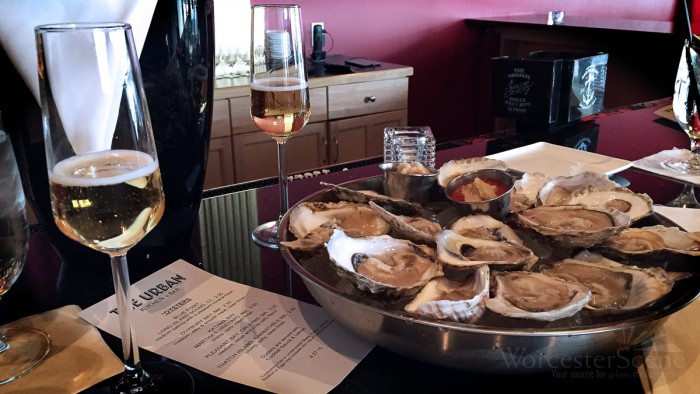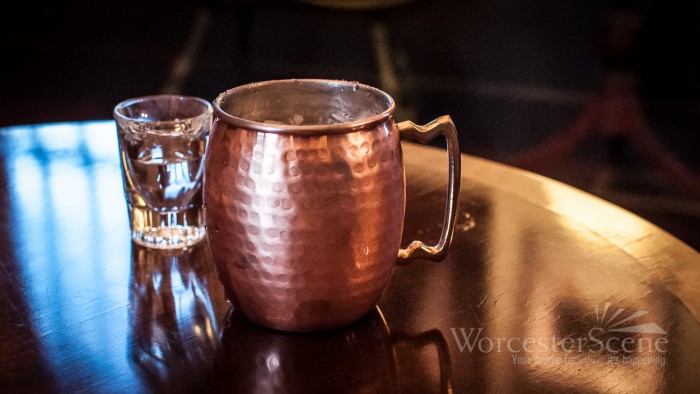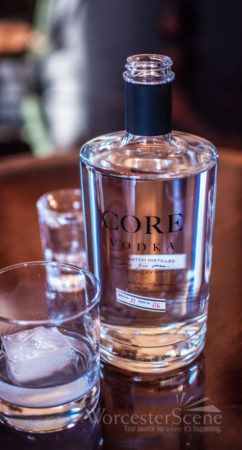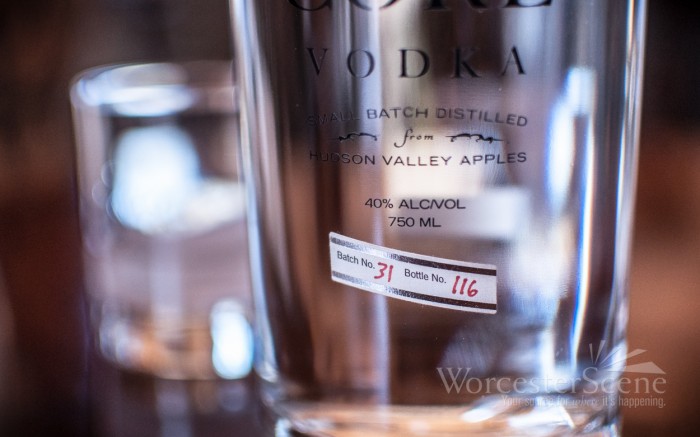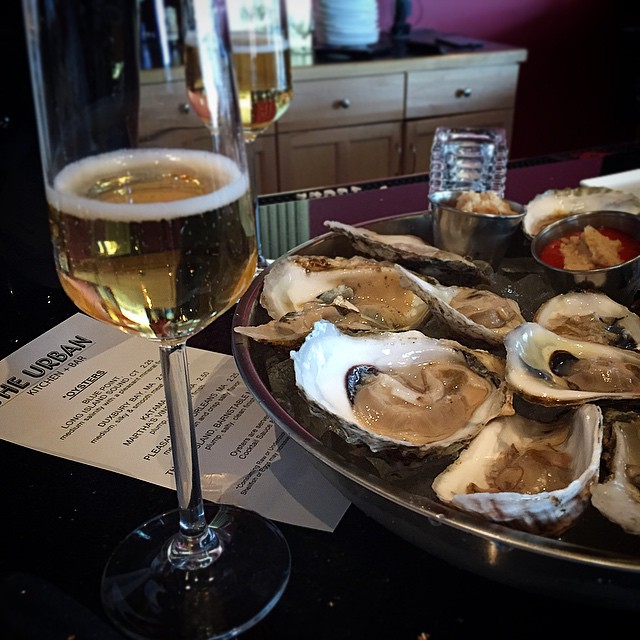
“Happy Hour: A period of time in which an on premise establishment offers reduced prices for certain beverages.” Use of the term in Massachusetts has been illegal until very recently. Happy hour was banned in 1984 after a person was killed by a drunk driver coming home from happy hour. But in 2013 the Alcoholic Beverage Control Commission (ABCC) changed the restriction on use of the term in an effort to give establishments a fighting chance against casinos that give out free alcoholic beverages. Mmmm, OK, a little slack is better than none at all. Creative and industrious restauranteurs, like Ian Nal at The Urban Kitchen and Bar, have slowly begun to capitalize on the small change by offering steep discounts on certain appetizers at the bar in an attempt to put the happy back into happy hour. The thing that makes me happiest of all, it involves oysters!
I am a bivalve addict. Without some self-restraint, I could easily slurp down 100 oysters in a sitting and then have a few dozen more for dessert. There are very few places outside of 10 miles from the coast I would trust to put out a perfectly cleaned, shucked, and brimming with brine half-shell. Worcester now has two and The Urban is one of them. Deliveries are made several times a week, thus the raw bar menu changes on a daily basis. They source the oysters from a local company with exceptionally high quality control standards. As a result, oysters can be a pricey appetizer for someone like me. Normally, prices range from $2.25 to $3.00 per oyster, but not during happy hour. Every day from 4:00 PM – 6:00 PM in The Urban’s Bar, oysters range from only $1.00 to $1.75. I tried them all and I even found a new favorite.
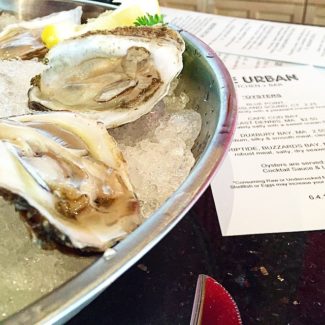 Named for the area where they are harvested each “brand” exhibits distinctive flavors and textures which are unique to the environmental conditions in and around the beds where they are cultivated. Nothing shows “terroir” more consistently than oysters, not even wine. Of course, while you’re at the bar you will want to pair the oysters with a beverage that will not overpower the range of delicate flavors. My knee jerk wine pairing for oysters is always Chablis, for others it is oysters and Guinness. Nal says, “I just don’t get the oysters and Guinness pairing. The flavor is just too overpowering.” The best way to find the perfect paring is to break away from what is expected and experiment! I selected the Plum Island Belgian White from Newburyport, MA. The wine was Roth, Sauvignon Blanc, Alexander Valley, CA. The cocktail, Nal suggested, a grapefruit shrub.
Named for the area where they are harvested each “brand” exhibits distinctive flavors and textures which are unique to the environmental conditions in and around the beds where they are cultivated. Nothing shows “terroir” more consistently than oysters, not even wine. Of course, while you’re at the bar you will want to pair the oysters with a beverage that will not overpower the range of delicate flavors. My knee jerk wine pairing for oysters is always Chablis, for others it is oysters and Guinness. Nal says, “I just don’t get the oysters and Guinness pairing. The flavor is just too overpowering.” The best way to find the perfect paring is to break away from what is expected and experiment! I selected the Plum Island Belgian White from Newburyport, MA. The wine was Roth, Sauvignon Blanc, Alexander Valley, CA. The cocktail, Nal suggested, a grapefruit shrub.
I will start with the grapefruit shrub since I had never had one before. I found the drink to be a very good cocktail companion for oysters. Refreshing grapefruit aroma and effervescence are balanced perfectly with rum and a hint of vinegar. Yes, vinegar, this is what makes this cocktail work so well with the oysters. The cocktail provides the balance of citrus fruit and savory notes which highlights the complimentary components of the clams. The cocktail worked particularly well with the Pemaquids from Demariscotta River, Maine. Large, plump, little oyster steaks with a complex, lemony brine that needed a hearty beverage as a partner.
The Belgian White displays a brilliant straw yellow, intensely aromatic floral hops, lemongrass, earth, mushroom, and yeast with a light, creamy body. While a suitable companion for the Pemaquids it was a match made in heaven with the Blue Points from Long Island Sound, Connecticut. The Blue Points were exceptionally salty and sweet with compact, firm texture. The creamy, refreshing effervescence toned down the salt to reveal the satiny flavors and texture of both bivalve and beer.
The wine was the most complimentary companion across the board for all of the oysters I enjoyed at happy hour. In addition to the oysters I mention above, I paired the three beverages with Daisy Bays and Summersides from Prince Edward Island, Canada and Wellfleets from the Cape. All were beautifully presented, clean, and unique in flavor. I never expected to find a new favorite but I think it had a little help from the Roth Sauvignon Blanc. Powder Points, Duxbury MA were the reigning champion for my palate until I had the opportunity to try Thatch Islands from Barnstable, MA. The pairing was profound. The wine exhibited a high, juicy, acidity, and medium body harmonized beautifully with the plump, firm texture of the wine. Tropical aromas in the nose and citrus on the palate made a spritz of lemon completely unnecessary for the oyster. Clean, crisp, complex, happy!
I can understand why the great state of Massachusetts is against happy hour. Discounting drinks might make people go overboard which is a dangerous thing. However, discounting oysters is never a bad thing. If you aren’t into mollusks, The Urban also offers shrimp cocktail during happy hour. If shellfish isn’t for you the creative cocktail menu, craft drafts, and wine list should be enough to entice you into the vibrant, upscale, and comfortable bar scene. Happy hour sure beats closing time.

